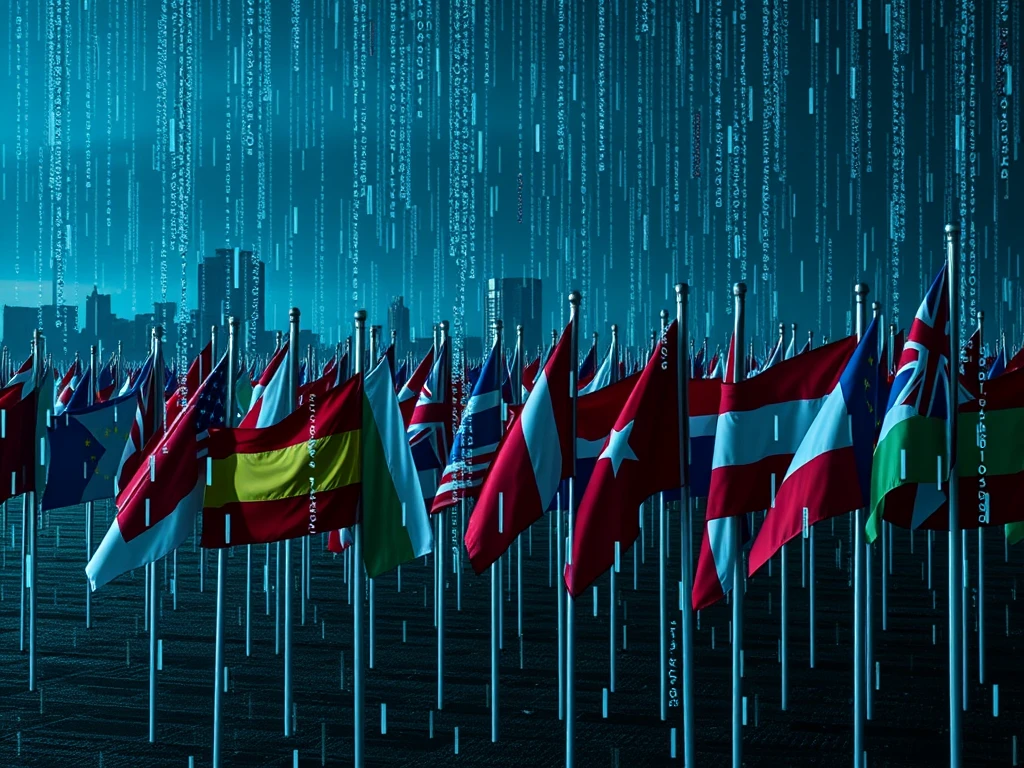Urgent Warning: DDoS Attacks Explode as Dominant Cyber Warfare Weapon

Are you prepared for the escalating cyber warfare reshaping global politics? For crypto enthusiasts and everyone online, the threat landscape is rapidly evolving. Distributed Denial-of-Service (DDoS) attacks are no longer just a nuisance; they’ve morphed into a dominant weapon in the arsenal of political cyber warfare. This shift, highlighted by Netscout researchers, demands our immediate attention. Let’s dive into why DDoS attacks are surging and what this means for the future of digital security.
Why Are DDoS Attacks Now a Dominant Form of Cyber Warfare?
Traditionally viewed as disruptive tools, DDoS attacks have undergone a concerning transformation. Network security firm Netscout’s recent report paints a stark picture: these attacks are now “dominant geopolitical weapons.” Several factors contribute to this alarming trend:
- Increased Frequency: Global DDoS activity surged by 12.7% in the latter half of 2024, totaling nearly 9 million attacks. This represents a significant escalation compared to the first half of the year, which saw 7.9 million attacks.
- Geographical Expansion: Latin America and the Asia Pacific regions have witnessed the most substantial increases, with approximately 30% and 20% rises respectively. This global spread underscores the pervasive nature of this threat.
- Overall Growth: The total number of DDoS attacks in 2024 reached a staggering 16.8 million, a nearly 30% jump from the 13 million recorded in 2023. This exponential growth signifies a clear and present danger.
These statistics aren’t just numbers; they represent real-world disruptions and vulnerabilities being exploited on a massive scale. The researchers at Netscout emphasize that attackers are using DDoS attacks to exploit “moments of national vulnerability,” aiming to amplify chaos and erode public trust in essential institutions. They are no longer just tools for disruption but sophisticated instruments of political cyber warfare.
AI Supercharges Political Cyberattacks: A Game Changer?
Artificial intelligence (AI) is not just transforming industries; it’s also revolutionizing cyber warfare, specifically in the realm of DDoS attacks. DDoS-for-hire services, often called booters and stressers, are becoming exponentially more potent due to AI integration. Consider these key AI-driven advancements:
- CAPTCHA Bypass: AI is enabling cybercriminals to automate tasks that were once manual, including bypassing CAPTCHA systems designed to prevent automated attacks. This automation drastically lowers the barrier to entry for launching sophisticated attacks.
- Behavior Mimicry: AI is advancing towards capabilities like behavior mimicry, allowing attacks to appear more legitimate and evade detection for longer periods.
- Real-time Adjustments: AI empowers attackers to make real-time adjustments to their strategies, making DDoS attacks more adaptive and persistent.
Ashley Stephenson, CTO of Corero Network Security, highlights that AI is democratizing cyberattacks. By automating complex tasks, AI reduces the need for specialized skills, making it easier for less sophisticated actors to launch powerful political cyberattacks. This democratization of cyber weaponry is a concerning development.
DDoS Attacks as Geopolitical Weapon: Real-World Examples
The report explicitly describes DDoS attacks as “precision-guided digital weapons,” capable of disrupting critical infrastructure during sensitive times. We’ve already seen real-world examples of DDoS attacks used in politically charged situations:
- X Platform Attacks: Elon Musk’s social media platform X (formerly Twitter) has been targeted by DDoS attacks. One notable incident occurred during Musk’s interview with Donald Trump, potentially aimed at disrupting the event’s reach. Another massive attack in March 2024 temporarily blocked user access.
- Russian Ties: The hacking group “Dark Storm,” linked to Russia, claimed responsibility for the DDoS attack on X. While they claimed it was not politically motivated, the timing and nature of such attacks often raise geopolitical concerns.
- Elections and Protests: DDoS attacks have been deployed during sociopolitical conflicts, elections, protests, and policy disputes globally, showcasing their versatility as a geopolitical weapon.
These examples illustrate how DDoS attacks are being weaponized to influence political events, disrupt critical communications, and sow discord. The intent may vary, but the impact on stability and trust in institutions is undeniable.
Protecting Against the Surge in Cyber Warfare: What Can Be Done?
The rise of DDoS attacks as a dominant form of cyber warfare necessitates a proactive and multi-layered approach to cybersecurity. For businesses, organizations, and even individuals, several key strategies are crucial:
- Robust Infrastructure: Invest in high-powered enterprise infrastructure capable of withstanding large-scale DDoS attacks. This includes advanced firewalls, intrusion detection systems, and traffic filtering mechanisms.
- AI-Powered Defenses: Leverage AI and machine learning for real-time threat detection and mitigation. AI can help identify and neutralize sophisticated, adaptive DDoS attacks more effectively than traditional methods.
- DDoS Mitigation Services: Consider employing specialized DDoS mitigation services that offer cloud-based protection and can absorb massive traffic surges, ensuring your online services remain available.
- Security Audits and Updates: Regularly conduct security audits to identify vulnerabilities and ensure all systems are updated with the latest security patches. Proactive security measures are essential.
- Awareness and Training: Educate employees and users about the risks of DDoS attacks and best practices for cybersecurity. Human awareness is a critical layer of defense.
The cybersecurity landscape is in constant flux. Staying ahead requires continuous adaptation, investment in advanced technologies, and a commitment to proactive security measures. The era of DDoS attacks as mere disruptions is over; they are now a formidable force in political cyber warfare, and preparedness is paramount.
Conclusion: The Alarming Future of Cyber Warfare and DDoS Attacks
The transformation of DDoS attacks into a dominant geopolitical weapon is a wake-up call. The combination of increased attack frequency, geographical expansion, AI-powered enhancements, and real-world political weaponization creates a dangerous environment. For the crypto community, and the digital world at large, understanding and mitigating this threat is no longer optional – it’s a necessity. As cyber warfare evolves, so too must our defenses. Embracing advanced security measures, fostering awareness, and staying informed are our best defenses against the rising tide of DDoS-driven political cyberattacks. The future of digital security depends on our collective vigilance and proactive action.








